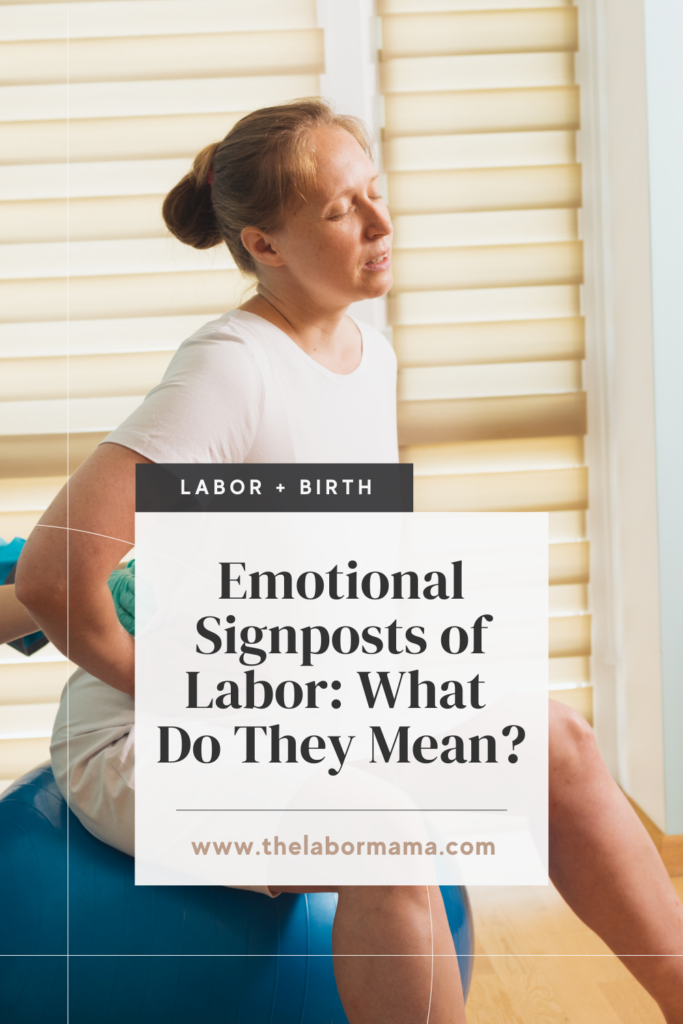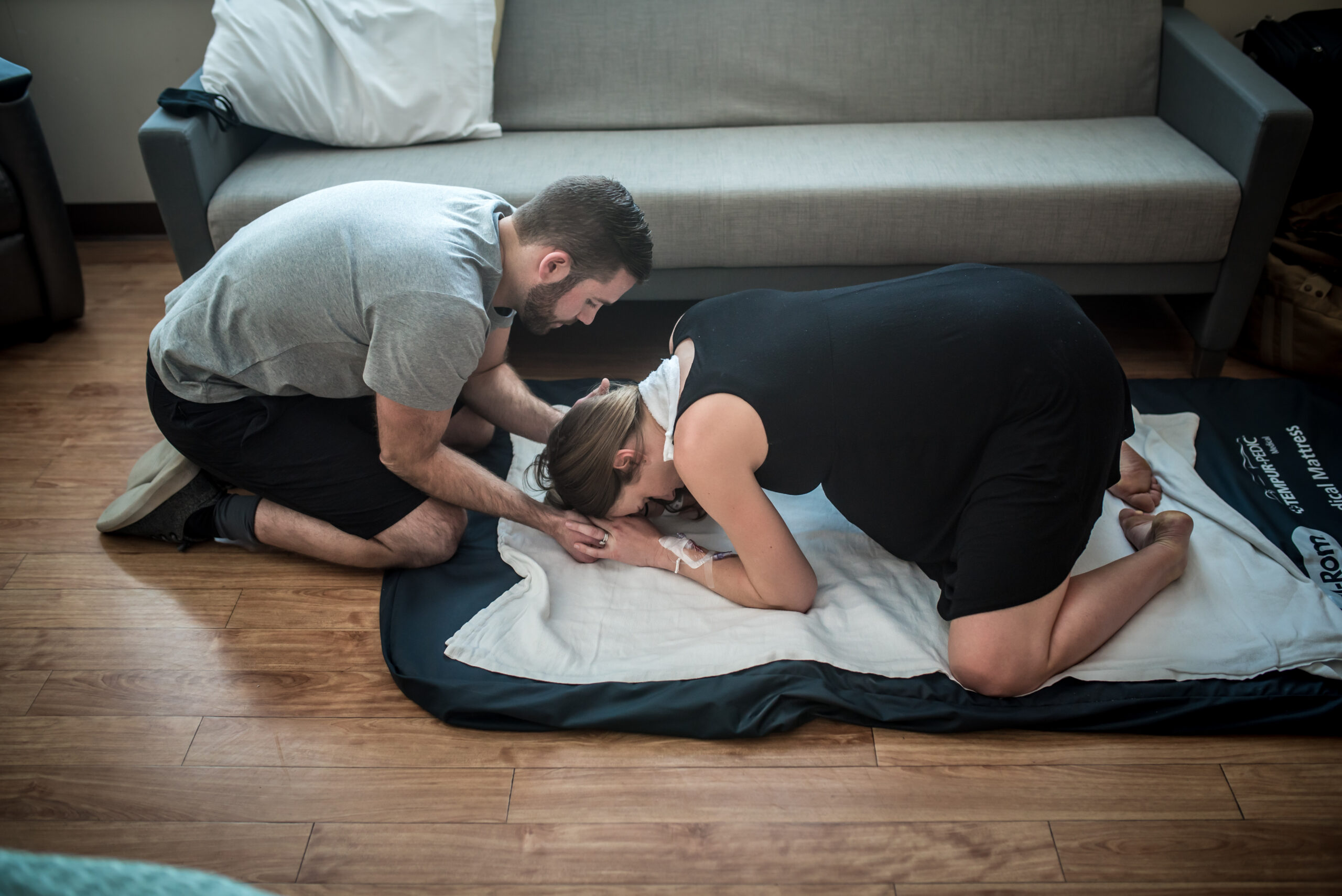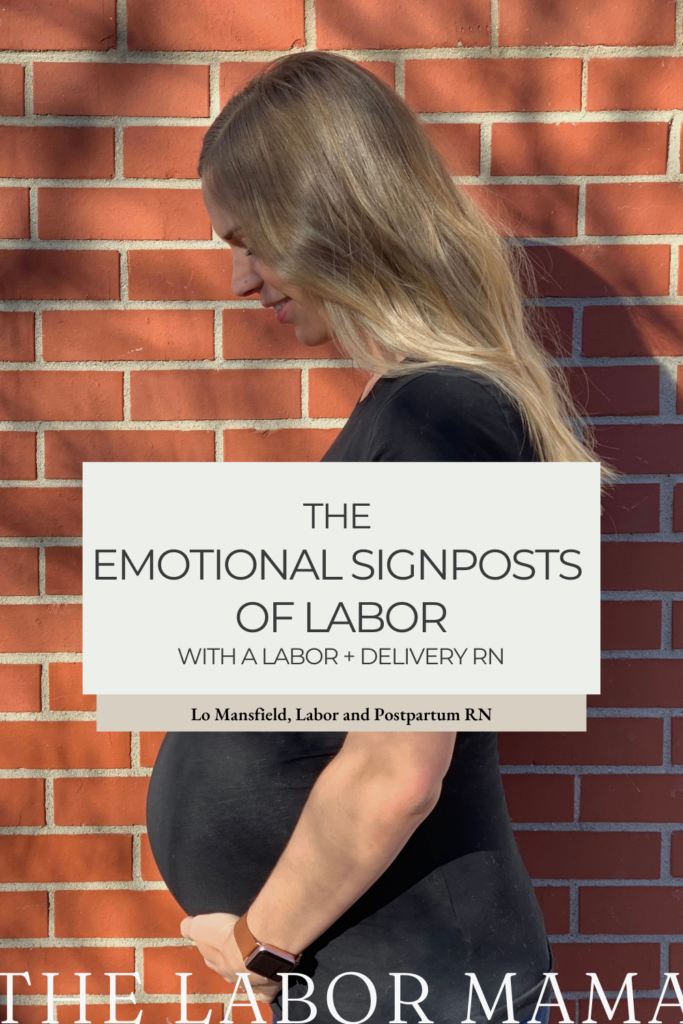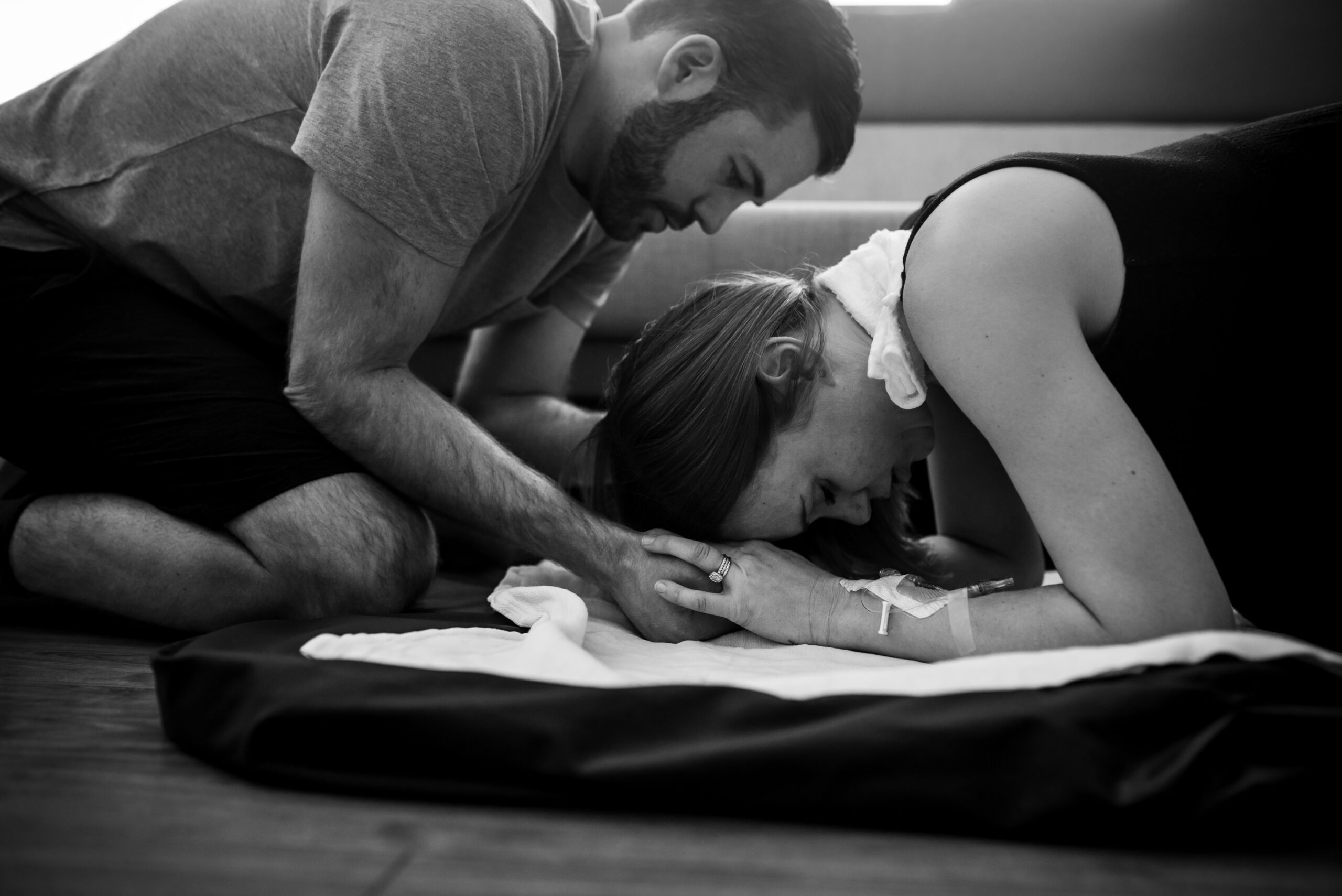Let’s talk about the emotional signposts of labor – and what labor actually looks like in real life. It took me about 2 seconds as a labor nurse to realize that when most babies are born, it looks nothing like it does in the movies. Rarely does someone’s bag of water break on the sidewalk. Babies usually take a loooong time to come out. I’ve never heard a woman actually breathing in a “hee hee hoo” pattern. And lastly, most mamas look like they’ve been through war (but just so joyful) once that baby is on their chest.
Basically, that FRIENDS episode, The One Where Rachel Has a Baby: Part 1 is just not true.

Who is The Labor Mama and Why Am I Here?
Hey friend! I’m Lo – also known around here and social media as The Labor Mama. I’ve spent my nursing career in labor, delivery, and postpartum, have birthed 4 of my own babies, have labored thousands of mamas at the bedside, have taught thousands of students online, and have even delivered a few speedy little babies with my bare hands (oops).
Here at TLM, I offer online classes about birth, postpartum, newborn care, and breastfeeding to empower you the way everyone should be. The education + support I offer gives you experience, evidence, and empathy; you’re getting all of my years of “clinical” RN knowledge, honestly combined with my real experiences as a mama, nurse, and CLC. These are not your average hospital classes (those won’t do it, I promise), and honestly, birth, postpartum, and breastfeeding don’t follow a textbook or protocol anyway. You need to know so much more than that!
If you want to connect with me further, head to Instagram. There are hundreds of thousands of us over there learning together daily.
Does everyone need to take a birth class?
When I got pregnant with my first, there was a part of me that was pretty sure I didn’t need to attend a birth class. My career had shown me so many things, both good and bad. What could a birth instructor possibly teach me that I didn’t already know? But I wanted to try to have my baby without drugs and I wanted my husband to understand the process and how he could help me. So I put my “know it all” nurse brain aside and gladly sat down next to my husband on that classroom floor.
And you know what? I think everyone should. 100000%. In whatever capacity you have time, money, or space for, get in front of some good birth education. Find a source that is comprehensive, unbiased, and willing to give you all the sides of your choices and options. Good birth education will do a really good job of centering you, your body, your baby, and your family. You should never feel like they’re telling you what to do, but instead teaching you about you – and then saying ‘hey, you’re smart and you are capable of making choices with what you know.’
Do birth classes teach about the emotional signposts?
Not surprisingly, our labor class spent a lot of time discussing the physical occurrences of birth. Dilation, effacement, stages of labor, pushing time, pelvic size – all of it was addressed. We also spent a night talking about pushing techniques, partner support, breathing techniques and relaxation. All sounds normal, right?
But what we have to remember is that labor is not just a physical process. There IS a lot that is physical – but we cannot look only at that part of it! Labor is mental, emotional, spiritual, physiological and physical. This was something my nursing education and work just had not really taught me well.
When our birth instructor began to talk about the signposts, I was hooked. So much of my nursing practice was related to the physical signs of labor and birth. I couldn’t remember ever being taught about the emotional signs you display. As I listened to her teach about each of the emotional signs – and what they meant – I couldn’t help but remember all of the patients I had cared for. I had watched so many of them march through those emotional signs, but had never fully realized how concisely they indicated what physical labor changes were occurring.
Are you looking for a birth class that cares about details like this? Join Your Body, Your Birth! This type of information matters, it can change your story, and you deserve to have it.
What are the emotional signposts of labor?
Ok, let me back up. We still haven’t answered the question: what are the emotional signposts of labor? Let me start really quickly with a mini breakdown of the stages of labor.
Typically, labor is taught to occur in stages – first stage (labor), second stage (pushing/delivery of baby), and third stage (delivery of placenta). The first stage of labor will (typically) be your longest. That (long) first stage is further broken down into three phases – early labor, active labor, and transition.
Read more on the stage of labor here!
You may have already learned about the stages of labor. But what you are not taught is that there are emotional signposts that line up with each of the phases of that first stage. Understanding those can be a game-changer!
The 3 signposts
- EXCITEMENT: The 1st emotional signpost occurs during early labor. This is the time from 0 centimeters to about 5/6 centimeters. You are likely smiling, taking pictures, anxious, chatty, and restless. Many continue to talk through their contractions, especially during those early centimeters of dilation.
- SERIOUSNESS: If you are getting serious, you are exhibiting the 2nd emotional signpost of labor and you have likely moved into active labor (6-8cm or so). You may lose modesty, move very slowly and deliberately, stop talking through contractions, and your are extremely focused.
- SELF-DOUBT: Are you confused? Scared? Have you given up and no longer think you can do it? These feelings are the 3rd emotional signpost. You will have likely stopped trusting yourself, your partner, and your body. You’re probably ready to call it quits. But don’t – the baby is close!



Why do labor emotions matter?
Your emotions in labor are powerful and it is so important that you understand them! If you don’t know what these signposts are, it’s possible they will scare you and/or “overtake” you. But, if you know what they mean – that you are making progress – then you can welcome the passage through each one!
They are also valuable tools for a nurse, midwife, or doctor. It is really common in a hospital birth to have cervical exams suggested as a way to measure labor progress. But if your care providers are tuned into your emotions, there is a good chance they will know you are making progress without ever touching your cervix!
The takeaway on the emotional signposts of labor
Birth is such a personal process. Everyone’s story is so different, so intimate, so perfectly and beautifully theirs. But as a witness to hundreds of births, including my own, I cannot deny that most bodies are designed to follow similar processes! The more you know about the process, the better you’ll be able to deal with all of the highs and lows of labor.
Whether or not you want to have your baby naturally/without an epidural, tuck this knowledge away. Definitely share them with any birth partner. Talk about them with your doula. My husband and I perfectly remember the moment in all of my births when the self-doubt started – and all of our kids were born within an hour or two.
What do you think? Do you remember going through any of this? Let me know in the comments! xx – Lo
|This article was first published on Motherly|
– – – – – –
For more information about the emotional signposts of labor and additional tips about natural birth, Natural Childbirth the Bradley Way was a great resource for my husband and myself. Since that labor class, we’ve had three babies naturally; all of my labors were totally guided by my emotions instead of monitors or cervical exams.

More resources (and freebies!) for you to take a peek at:




